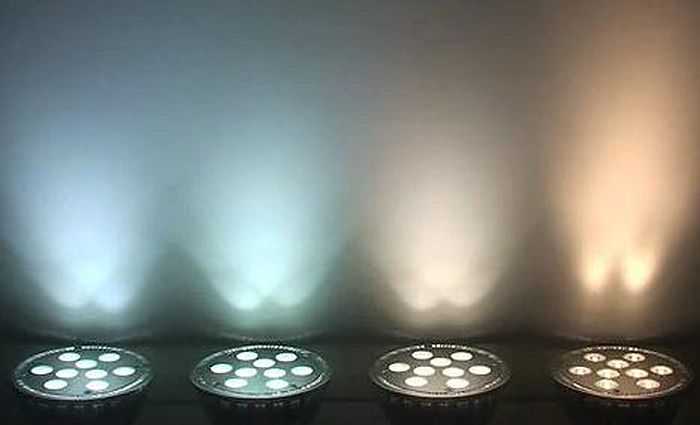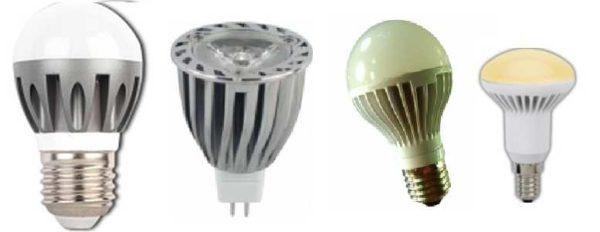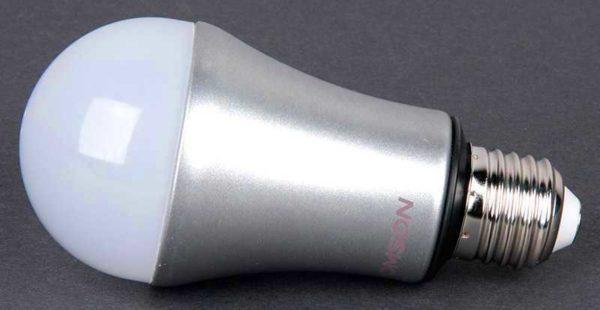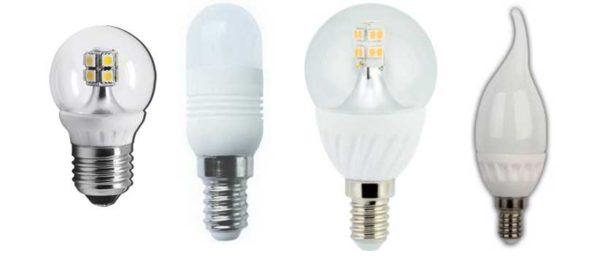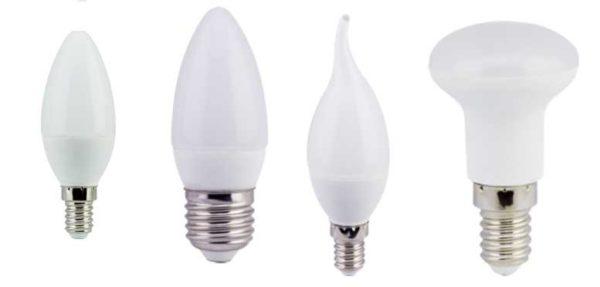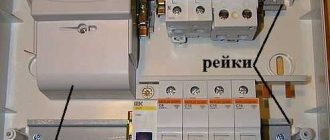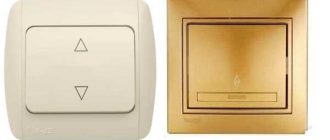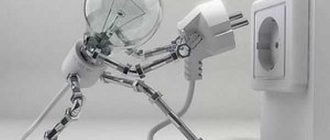A few years ago, LED lamps were very expensive, so they were rarely used. With the development of technology prices became lower and lower, the parameters of lamps are better. And today many people want to choose an LED lamp, but are lost in a large variety of models and the spread of prices for lamps of the same light output. What is the difference and what it depends on – in the article.
Съдържание на статията
Choice of technical parameters
Choosing an LED lamp in an apartment or house should start with the technical characteristics. This is at the incandescent lamps was only the power, and even the size of the base.
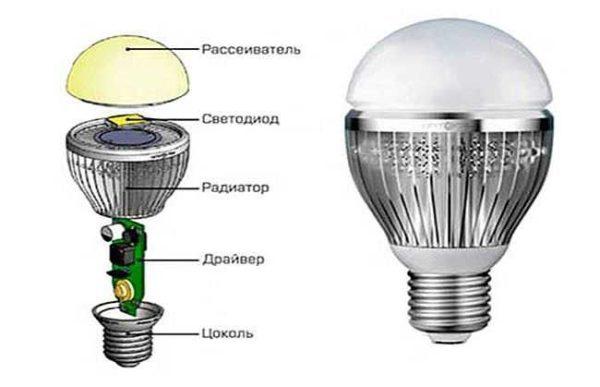
LED lamps – more serious equipment, in which, in addition to the crystal that emits light, there is also a built-in voltage converter – driver, which transforms the AC mains voltage into 12 volts DC. So for the right choice will have to familiarize yourself with some technical nuances.
Power and luminous flux
Power is measured in watts. Abbreviated in Russian it is “Watt”, in English designation by the letter W. It is this value has traditionally been used to determine the light efficiency of incandescent lamps. So it continues, although modern lighting devices have many times smaller ratings, and shine as well. That’s what we’re going to look into.
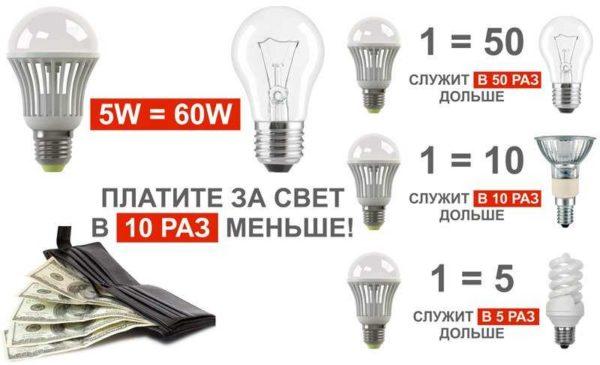
At the current stage of technology LED lamps are considered the most economical: when consuming a minimum amount of electricity, they produce more light. If you compare them with incandescent bulbs, they are almost 10 times more efficient. This means that where there used to be a 100-watt lamp “Ilyich”, you need to put LED at 9-10 watts. A good way to significantly reduce electricity bills. To make it easier to choose an LED lamp on the power, there is a table of correspondence of the power of light sources of different types.
| Incandescent lamps | Fluorescent and energy-saving lamps | LED | Luminous flux |
|---|---|---|---|
| 20 W | 5-7 W | 2-3 W | 250 Lm |
| 40 W | 10-13 W | 4-5 W | 400 Lm |
| 60 W | 15-16 W | 6-10 W | 700 Lm |
| 75 W | 18-20 W | 10-12 W | 900 Lm |
| 100 W | 25-30 W | 12-15 W | 1200 Lm |
| 150 W | 40-50 W | 18-20 W | 1800 Lm |
| 200 W | 60-80W | 25-30W | 2500 Lm |
Today in stores there are different types of lamps – incandescent, halogen, energy-saving, LED. All of them have different efficiency. And if you do not have a table of compliance at hand, you can be guided by the light flux created by the lamp. For the basis can be taken all the same incandescent bulbs – we are used to them, we have long been using and not badly imagine what amount of light gives, for example, a lamp at 100 watts. So, this lamp gives about 1200 Lm. Having memorized this figure, you can more or less accurately represent what luminous flux gives out the lamp you are considering, because on most packages are exactly Lumens, which reflect the amount of light that emits this source.
Color temperature
You’ve probably noticed that the light from artificial sources has different colors. This is the color temperature of the light. LEDs have an extremely wide range of emission – they can be colored – green, red, blue, give out violet light. This feature of them is used if you need colored backlighting.

When choosing LED lamps for lighting a house or apartment consider only a small part of the spectrum. But even here the choice is large. LEDs recreate many shades of light – from that which emits bright midday sun, to muted with a yellowish or slightly reddish tinge – the sun at sunset or dawn.
| Color temperature | Hue | Characteristic and application area |
|---|---|---|
| 2700 К | Warm white with a reddish tint | This light is emitted by incandescent bulbs of low wattage. A feeling of warmth and coziness. |
| 3000 К | Warm white with a yellowish tint | Characteristic of halogen lamps, the light is slightly cooler. |
| 3500 К | Normal white or neutral white | Characteristic of fluorescent lamps. Neutral light that does not distort color perception. |
| 4000 К | Cool white | Used in some modern styles – high-tech, for example. Can be tiring with its “sterility”. |
| 5000-6000 К | Daylight | Used for lighting greenhouses. Too bright for home lighting. |
| 6500 К | Cold daylight, has a bluish tint | Very bright. Used for photo and video shooting. |
Choose an LED lamp by color temperature should be based on the purpose of the room. For overhead lighting in the bedroom it makes sense to choose a warm white color with a yellowish, or better – reddish tint. It is more conducive to relaxation than any other color.
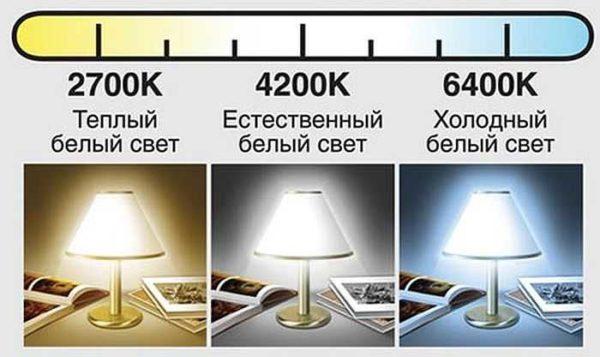
At the same time, lamps with neutral white light should be used in reading lamps – sconces or table lamps. We recommend using them in all other rooms as well. Despite the fact that yellowish light is more familiar to us, you will feel better with neutral white light – it is easier to read and your eyes get tired less. These are subjective feelings based on personal experience.
Color rendering
Having lamps of the same color temperature we can get different color perception. This depends on the accuracy of color rendering, which is characterized by the index (coefficient) of color rendering. It is denoted by the Latin letters CRI (Color Rendering Index), followed by numbers from 0 to 100. Sometimes denoted as Ra.
| Color rendering characteristic | Degree of color rendering | Color Rendering Index CRI | Examples of lamps |
|---|---|---|---|
| Very good | 1 А | More than 90 | LED and halogen lamps, Philips TL-D 90 Graphica Pro, OSRAM DE LUXE and Color proof fluorescent lamps |
| Very good | 1 B | 80-89 | LED and fluorescent lamps (OSRAM LUMILUX, VANTEX, LDC, LBTC) |
| Good | 2 A | 70-79 | OSRAM BASIC fluorescent lamps |
| Good | 2 B | 60-69 | Fluorescent lamps LD, LB |
| Sufficient | 3 | 40-59 | Mercury lamps |
| Low | 4 | 39 and less | Sodium |
The highest value is 100. A light source with such a color rendering coefficient does not distort colors at all, but the cost of such a lamp will be very high. For lighting at home are considered normal lamps with a CRI of 80 and above. Here in this range and should look for LED lamps for lighting at home. And again, you will have to choose depending on the purpose of the lamp. For example, for illumination of paintings, it is desirable to use lamps with a color rendering index of 100 or so, as they will not distort colors. For other rooms it is possible and with lower indicators.
Angle of dispersion
The distinguishing feature of LEDs is that they shine straight ahead. To the sides, a very small amount of light waves are deflected. That is, the crystal itself produces a narrowly directed beam of light. But the LED lamp contains a certain number of these crystals. From how they are located and depends on the angle of light scattering. This allows you to create both a very narrow stream of light, and very wide. The angle of dispersion of LED lamps can be from 30 ° to 360 °.

Choose the angle of dispersion of the LED lamp should also be based on the purpose of the lamp. If it is a lamp for general lighting, placed on the ceiling, the angle of dispersion should be taken from 90 ° and more – up to 180 degrees. If it is a lamp for reading or to illuminate a small area (for illumination of paintings, for example), it is worth choosing a narrower beam.
In decorative lamps with slots, it is worth putting a lamp with a 360° angle of dispersion or installing narrowly directed ones. You can get a very interesting effect.
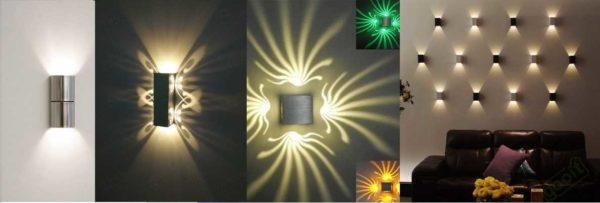
If you have not previously been able to create such a game of shadows, now you know that you need to choose the right LED lamp.
Type of base and the presence of a heat sink
The base is chosen simply: under the available lamp. The industry produces LED lamps with standard sockets to replace incandescent lamps (E14, E 27, E40), there are options to replace halogen lamps (G4, GU5.3, GU10). There are LED lamps that are built into furniture – for highlighting cabinets and cupboards. They have a base of type GX53.
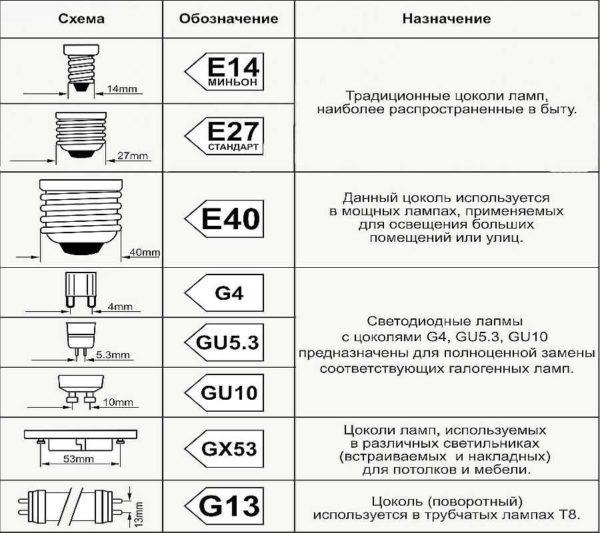
One of the disadvantages of LEDs is that they heat, and with a significant increase in temperature, they lose their brightness. With severe overheating, they can fail altogether. There are two designs of LED lamps – in the form of a familiar bulb and without it – the so-called corn lamp. For better heat dissipation from the crystals in bulb lamps usually put heat sinks. In the corn, due to the lack of a bulb, heat dissipation is efficient and without a radiator.
For LED bulb lamps with a bulb there are several types of heat sinks:
- Ribbed aluminum. Good at heat dissipation due to the ribbing, which increases the heat dissipation area. But aluminum conducts current well, to protect against dangerous touch, the surface of the radiator is usually covered with paint or varnish.
- Smooth aluminum. It is usually a thin layer of aluminum. Heat dissipation is usually worse, there may be holes for better ventilation.
- Ceramic. The most efficient way to dissipate heat, but such LED lamps are the most expensive. Ceramics does not conduct current, so LEDs are often mounted directly on the radiator, which contributes to more efficient cooling.
- Composite. This is an aluminum heat sink, over which a layer of thermally conductive plastic is applied. This type of radiator is widespread, since the outfit with good heat dissipation and safety has a low price. Accordingly, LED lamps with composite heat sinks – this is a medium or low price segment.
- Plastic. Plastic is used special, well conducting heat. This is the most inexpensive option of radiators for LED lamps, which has an average efficiency. To improve heat dissipation, there may be holes.
Choose a cheap LED lamp and hope that it has a ceramic radiator is not worth it. But also be scared of plastic coolers too. They have more than decent service life and many times “pay back” the money spent on their purchase.
Lamps with ceramic or fluted aluminum radiators should be placed in places where heat dissipation is critical. For example, in recessed fixtures where the hottest back of the lamp is at the level of the stretch ceiling or furniture panel/wood/fiberboard. Here strong heating can lead to changes in the structure and color of the material, which is obviously not good. In less critical situations, even plastic and composite heat sinks work fine – LED lamps still warm up many times less than incandescent lamps.
Service life and warranty period
One of the most important parameters for consumers – working life. It is indicated in hours and shows for how long the LED lamp retains performance (under normal operating conditions). The average “life expectancy” of modern LED lamps – about 30,000 hours, which is equivalent to 10 years, the maximum – about 50-60 thousand – that’s about 15-18 years. But LED technology is actively developing and, most likely, in the near future there will be LED lamps with an operating life of 100 000 hours or even more.
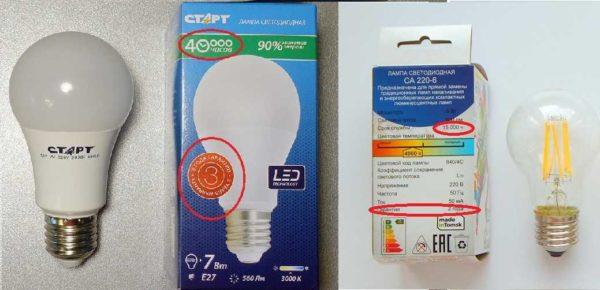
But do not be particularly deceived. The working life is the time that the crystal is able to emit light. Unfortunately, there is such a phenomenon as burnout of LEDs. As a result of this phenomenon, they lose the brightness of luminescence. The rate of these changes depends on the operating conditions – the less overheated the LED and the less it is at low temperatures, the longer the original brightness is preserved. How to understand how long the lamp will last without loss of brightness? By the warranty life. This figure more realistically reflects the state of affairs, since in case of problems the device is simply replaced with a new one. Here manufacturers on the contrary, tend to slightly underestimate the figure, so that warranty cases were as few as possible.
Dimming
Change the brightness of lighting in the room can be done in two ways – by increasing or decreasing the number of lights on or by installing a dimmer. The second method is more convenient, as it allows you to accurately “customize” the lighting under the requirements of smoothly changing the brightness of the glow by turning the regulator.
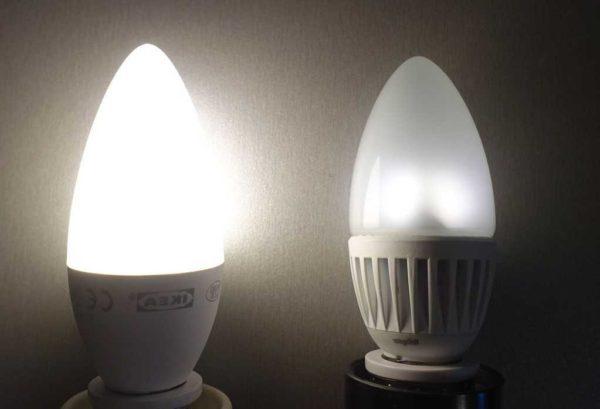
But, if you need to choose an LED lamp in the network with a dimmer, in the specifications should stand a note that it is dimmable. The usual one will shine in full force, and at a certain position of the dimmer will simply begin to blink.
In addition to the fact that the lamp must be dimmable, you need to look at the dimming limit. Some have a minimum dimming limit of 5%, while others have a minimum dimming limit of 20%.
Manufacturer Rating
Choose an LED lamp on the technical parameters – this is not all. You will still have to decide on the manufacturer. In light of the fact that LED lamps are not so cheap, you want to save money and buy from those that are cheaper. This, as a rule, Chinese lighting devices, and of that are not distinguished by at least normal quality. Their distinguishing feature – poor packaging, no warranty period or it is there, but very small. They are assembled mainly from the cheapest parts, as a result, the color rendering coefficient (real, not written) may not exceed 60, due to poor quality parts in the converter lamp, it flickers. It is difficult to talk about the service life of such products – it’s a matter of luck. In general, no matter how much you want to save money, it is better to choose an LED lamp from the products of normal manufacturers.
The highest quality
Very good products are produced by European firms Philips and Osram. Their offices are located in Europe, but the factories are mainly in China. Despite this, they produce LED lamps of very good quality. Image must be maintained, because the quality is controlled strictly. This is true, but their prices are high. At Phillips LED lamps cost from 800 to 1800 rubles per piece, Osram has a budget line with a cost of 100 rubles, there is a premium – with a price of 2700 rubles, and the average range – from 400 to 800 rubles.
Normal quality at a low price
The best combination of price and quality can be found in representatives of the middle price category. There are Russian manufacturers, there are Chinese, also represented some other Asian countries. The products of these firms have a predominantly good product evaluation. Also, the stated data coincide with the realities:
There are still many other firms, but reviews of the products of these firms are more often negative. If you want to choose a LED lamp of good quality for reasonable money – look closely at the above-named brands.

